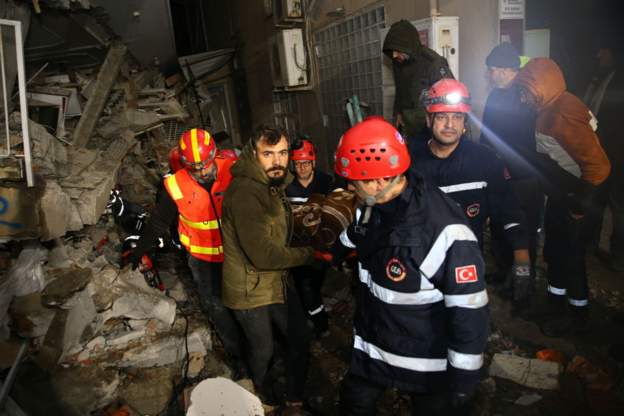Turkey earthquake: Rescuers worked through the night to find survivors
- Posted on
- Comment

The heavy machinery worked through the night here in Adana, klieg lights illuminating the collapsed buildings and huge slabs of concrete in monochromatic scenes repeated across southern Turkey.
Occasionally the work would stop, a call of Allahu akbar would rise up when a survivor is found, and too when the dead were recovered.
A big Turkish and international rescue effort is under way here. My plane from Lebanon was full of firefighters and paramedics, on arrival Adana airport was packed with Swiss and Romanian rescue workers in their hundreds.
The city is full of the homeless. Those who lost their homes and others too fearful of aftershocks to return to apartments and houses. The first earthquake struck in the middle of the night, 03:20 local time (00:20 GMT). It shook and thundered for 90 seconds, it felt like forever, but at the same time was only an instant to collect belongings and leave for safety. Some left without shoes, coats and phone chargers. Temperatures are expected to drop below freezing later this week.
As much as this is a catastrophe for Turkey, the situation in northern Syria is more desperate. The border remains tightly controlled, there is no international rescue effort and little heavy machinery.
The 1.7 million displaced people living on the border thought their lives couldn’t get any worse, then the earthquake came. They’d been living in temporary shelters and half-finished buildings for years, refugees in their own country, escaping Syrian President Bashar Al Assad’s reign of terror.
In Jinderes, Aleppo, and Bania, Idlib, entire towns collapsed around the people. They call out for help and cry in pain, but there is almost no one to respond to their calls. In northern more than a decade of war left the people had almost nothing, this terrible earthquake has left them with even less.
-BBC







 (Selorm) |
(Selorm) |  (Nana Kwesi)
(Nana Kwesi)